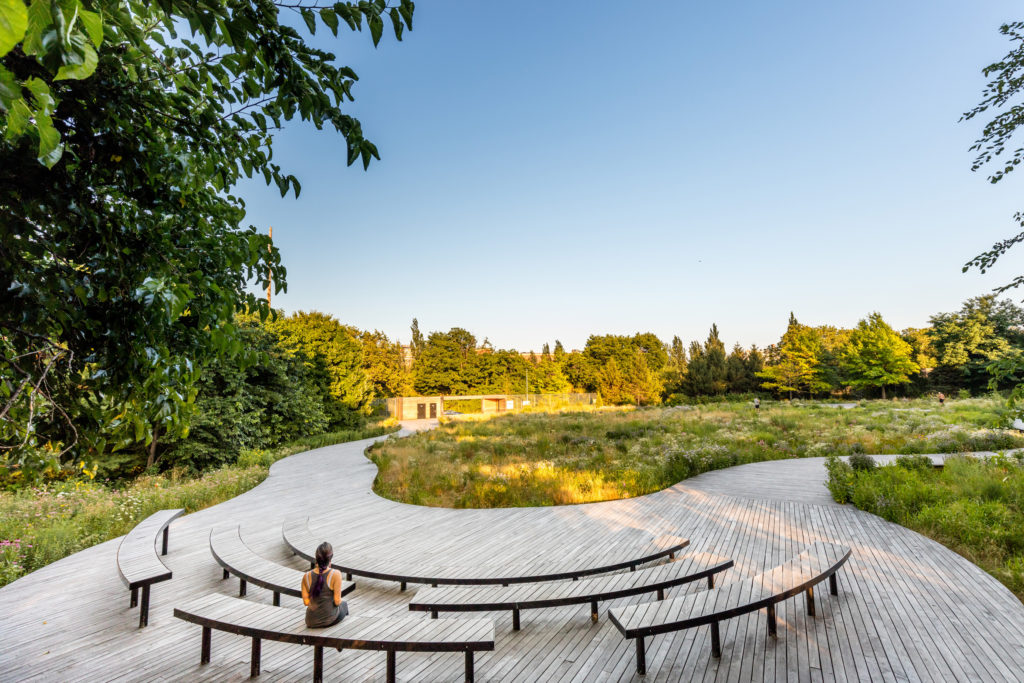
While Brooklyn may be synonymous with warehouses and brownstones for many, Brooklyn Greenway Initiative (BGI) has a vision of a green, connected waterfront—26 miles for pedestrians and cyclists to move freely across the borough. Given New York City’s growing count of pedestrian and cyclist injuries and deaths in 2019, many of which occurred in Brooklyn, BGI’s work to build a “protected and landscaped route” for residents to travel safely across the borough is vital. With just 8 miles left to go, this year BGI partnered with Numina to measure Greenway usage and understand visitation at the Naval Cemetery Landscape (NCL), a memorial landscape and pollinator habitat on the Greenway in South Williamsburg. The NCL space, an urban oasis in industrial Brooklyn, presented an exciting opportunity to apply Numina’s technology to a new set of questions and use cases outside of our normal traffic safety applications. Because Numina measures multiple modes important to BGI (including pedestrians, bicycles, vehicles, dogs, etc.), our data can identify important trends unique to each and analyze the interactions between different objects. Understanding these multimodal behaviors helps inform operations planning, just as it does for transportation planning.
This post highlights how Numina data can answer targeted questions that public space managers have about space and infrastructure usage (like bike lanes) and visitation patterns. As a Solutions Engineer, I work with our partners to understand the nuances of their projects and priorities to transform our data into the insights they need for decision-making and forward planning. This project focused on a segment of the Brooklyn Greenway in front of NCL. This portion connects Williamsburg with DUMBO and Downtown Brooklyn and is situated next to Brooklyn Queens Expressway. It is a connecter between several commercial and dense residential neighborhoods, which are currently separated by an industrial area. Focusing on the Summer and Fall months, we filtered Numina data for activity that occurred on the sidewalk and bike lane to understand how bicycle and pedestrian commuter counts and space visitation changed over time.
Measuring Pedestrian and Cyclist Greenway Usage
Space and infrastructure usage data can help inform operations decisions and development planning, quantifying demand across seasons and identifying peak times and directions of travel. By visualizing the data across different time periods, it’s possible to better understand trends by month, day of week, weekend vs. weekday, etc. This analysis provides deeper insight into how user counts change over time. Two questions of focus were:
- How do bicycle counts change by month?
- How many cyclists use the bike lane on weekends, and how does this compare for different seasons?
Our analysis showed that of the 200,000+ bicycle trips detected in Summer and Fall 2019, 70-80% of the cyclists were traveling South (left in the image), and 10% were on the sidewalk rather than the bike lane. August was the most popular month for cyclists, and weekends had over double the activity of weekdays. While the majority of bike lane users were cyclists, some scooter and skateboard users were observed as well. These results suggest that the Greenway is heavily used for weekend recreational activity, but there’s an opportunity to increase commuter usage, especially for those traveling north to Williamsburg.
Measuring Visitation Patterns
For public spaces like the Naval Cemetery Landscape, visitation data can support decision-making to adjust hours of operation or to understand where to place signage that aligns with current pedestrian paths to capture lost visitation. This is especially important for spaces like NCL that do not have a gate or turnstile to track visitation counts during operating hours and lost visitation when it is closed. Special events and programming are also important moments to measure change in activity, to better understand which to prioritize for the next season. Important questions included:
- What are visitation patterns by day of week, and how does this compare for different seasons?
- How do specific events impact visitation?
- How much lost visitation occurs each day?
- What is the average lost visitation for a specific day of week and hour, and how does this change by season?
To perform this analysis, I used Numina’s anonymous pedestrian paths and counts data and a Behavior Zone at the NCL entrance, to capture activity that occurs at the stairs and gate in front of NCL. Thursdays and Saturdays stood out as clear visitation peaks, often due to special events hosted on those days, which were an opportunity to draw new visitors and extend operating hours. One event in particular, BGI’s Season Closer Event, caused a major spike in visitation on October 19th, over 200% more than other Saturdays in October.
Because NCL has different operating hours depending on the season, in order to effectively quantify lost visitation, I filtered the data to perform separate analysis for “open” and “closed” hours for that specific day and time. Then, I visualized this by day, to quantify the impact on each individual day. Additionally, I created a heatmap gradient graph highlighting the average visitation by hour and day of week. These graphs highlight which days contributed the most to the 1,500 potential visitors who passed by the entrance during closed hours during the late summer months. The heatmap gradient visually emphasizes specific hours where visitation was the highest as well as those that offer the most opportunity to capture more visitation. In this case, early evenings seem to provide better opportunity than mornings.
As a Brooklyn-based team, and active contributors to the pedestrian and cyclist counts observed in these graphs, we are excited to see the high bike counts on the Brooklyn Greenway and community interest in Summer Thursdays at NCL. We look forward to measuring BGI’s continued growth as it moves closer to achieving its mission of connecting our borough!
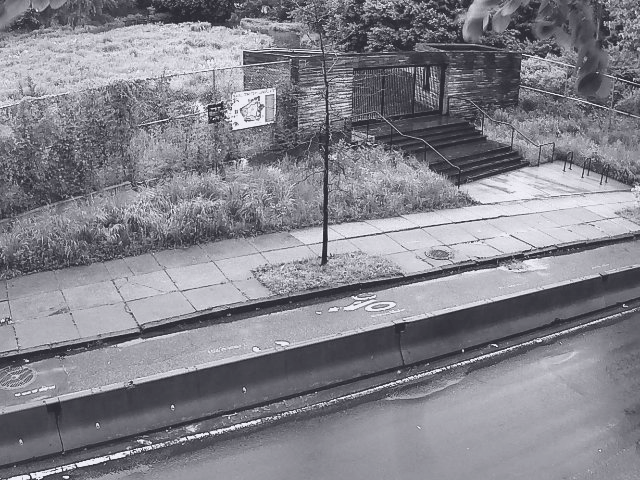
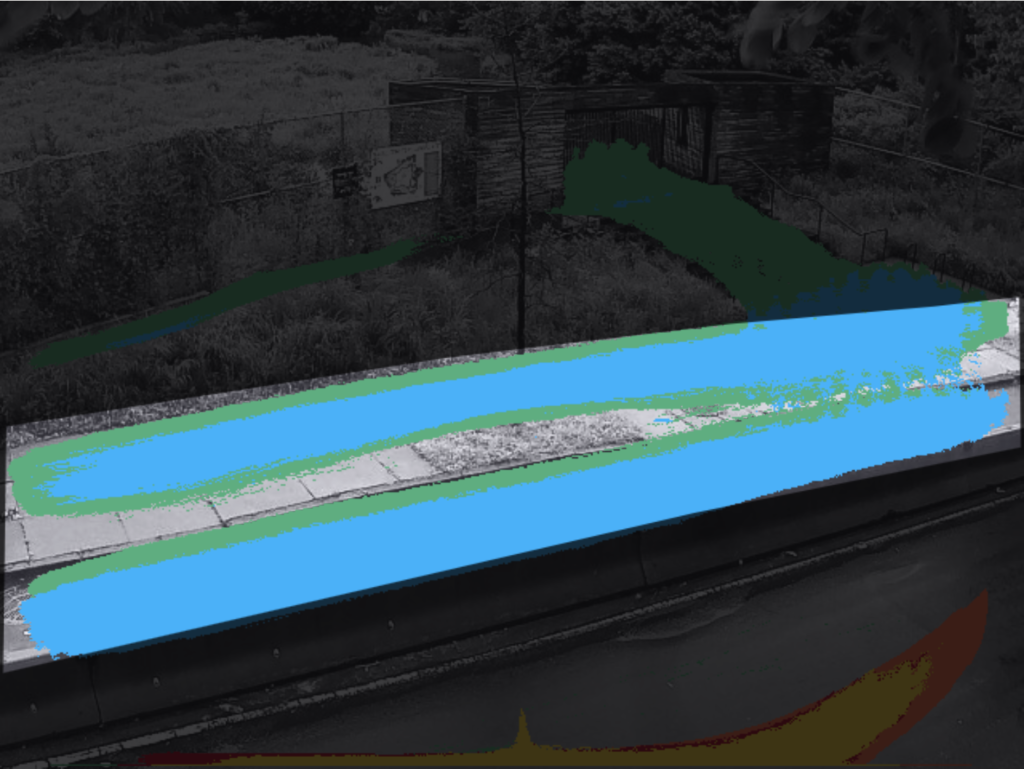
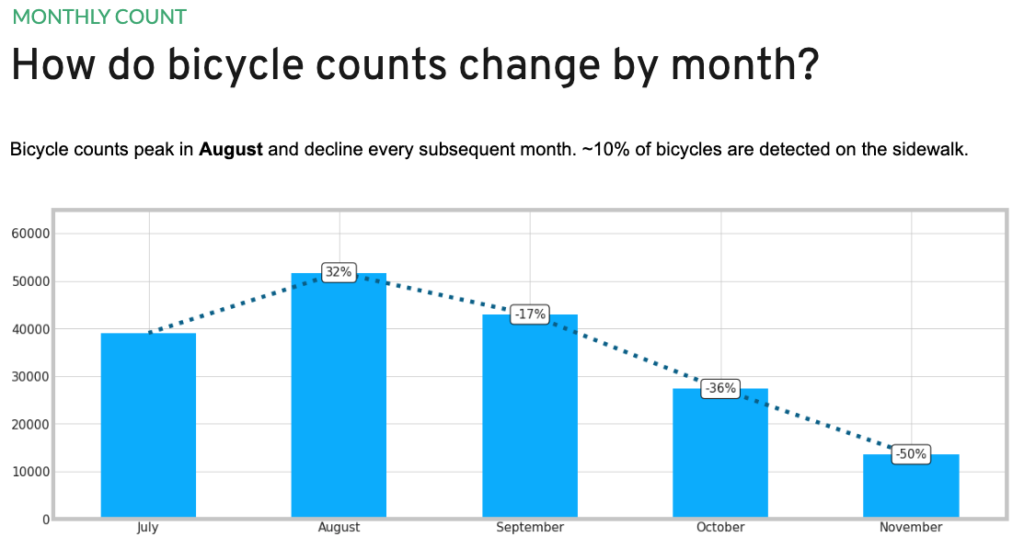
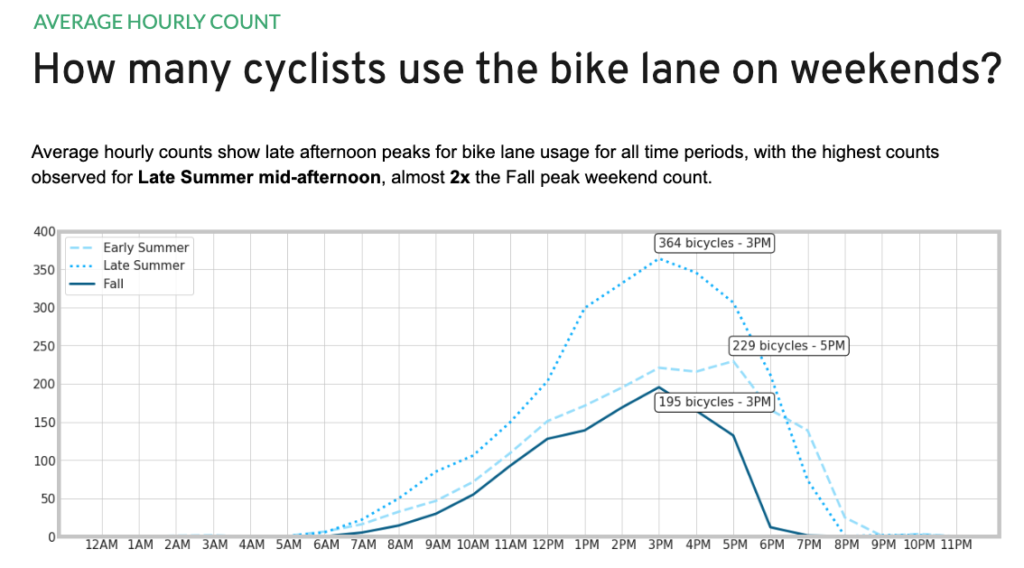
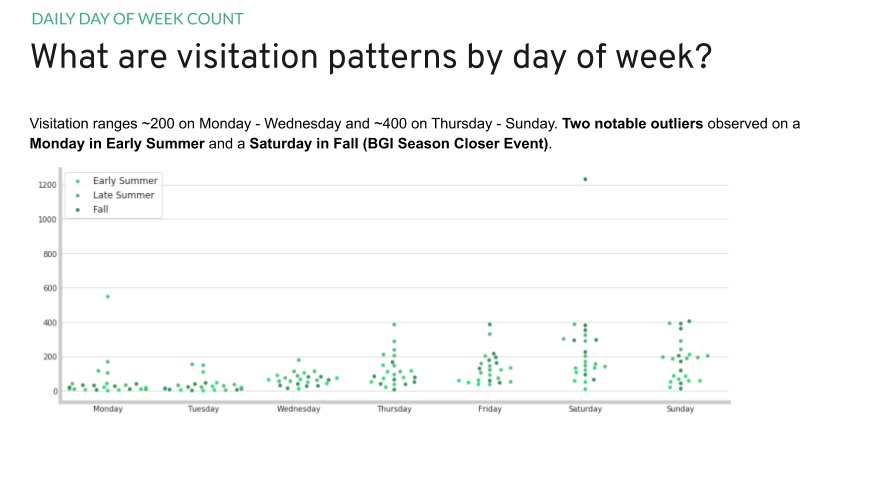
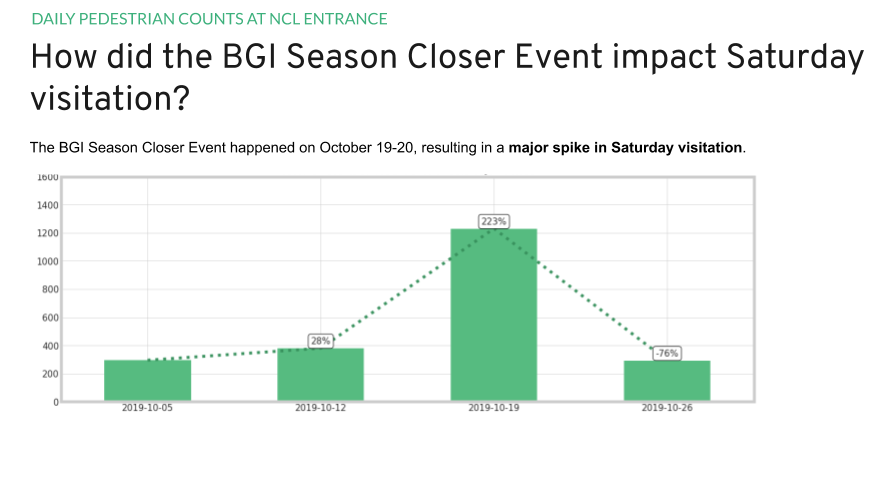

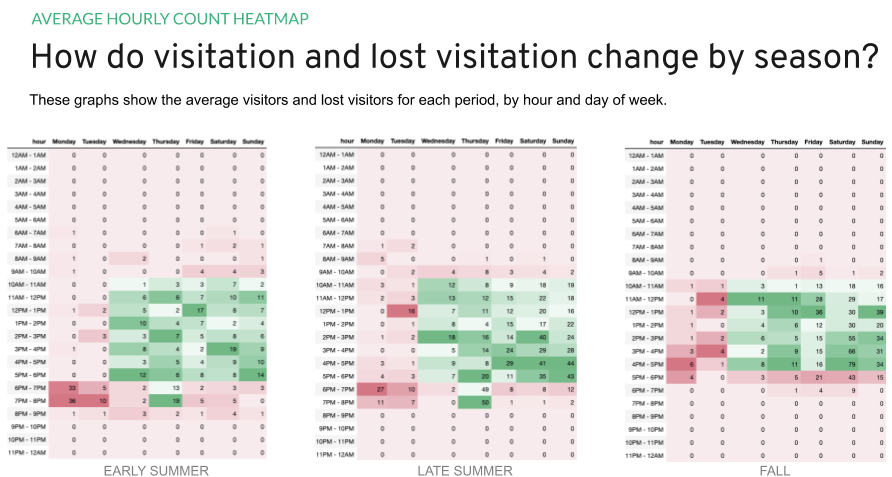
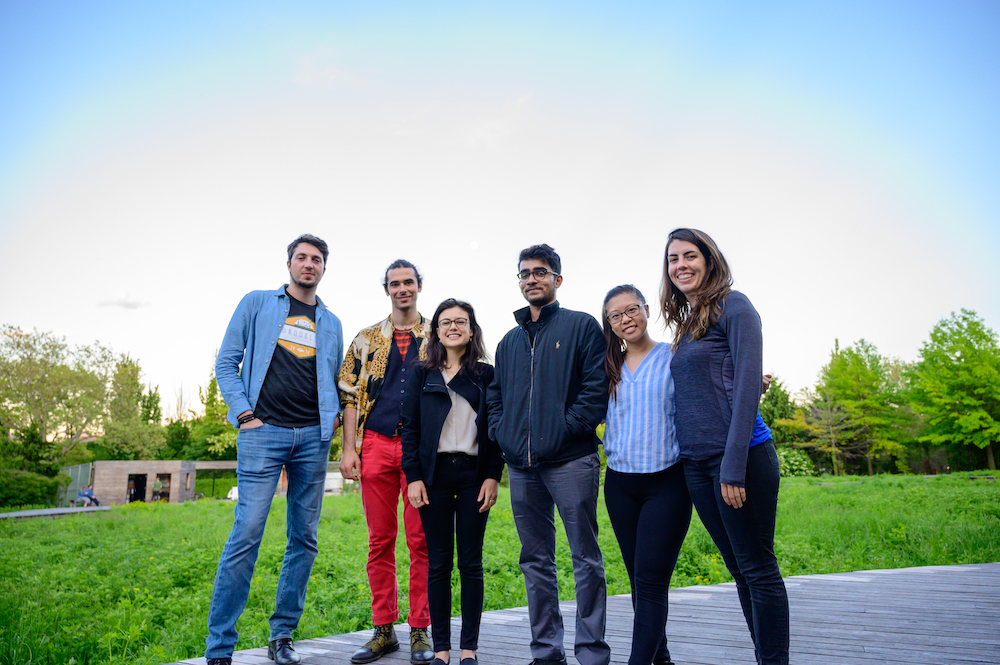
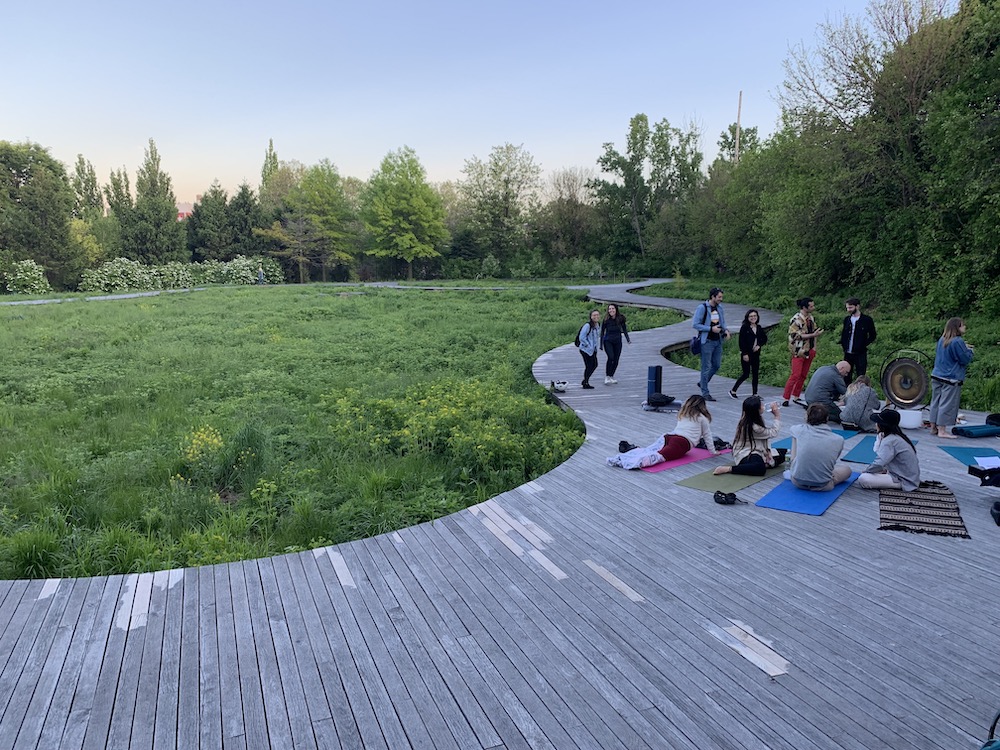
Pingback: Navy Yard program seeks to find tech talent and build sustainable cities – Bitfirm.co
Comments are closed.